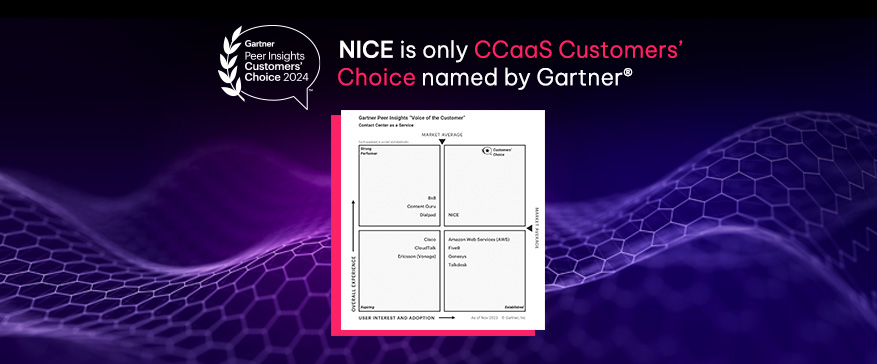U.S. Army General George S. Patton, who led what was arguably
one of the most traditional command-and-control groups in the world during WWII, understood the pitfalls of micromanaging people.
“Never tell people how to do things,” he is often quoted as saying. “Tell them what to do, and they will surprise you with their ingenuity.”
Sometimes, marching orders are just what a task requires—for example, when you’re facing a crisis or an employee is new. But far more often, telling people how to perform tasks and follow-ups—precisely, prescriptively, and in great detail—simply results in removing opportunities for learning, lowering productivity, and stamping out ownership and trust.
Contact centers today are increasingly recognizing the sentiment behind Patton’s quote and moving away from micromanaging people to empowering them. As they do, there’s a growing acknowledgement that agents are capable of managing themselves—their performance as well as their schedules.
In the contact center, which has long been known for a culture of micromanagement, workforce managers have traditionally relied on key performance indicators, or KPIs, to keep tabs on agent performance.
In today’s more enlightened era, however, supervisors are empowering agents to monitor their own KPIs and manage their own performance. And they’re finding that when you improve the agent experience by giving customer-facing employee information, choice, and power over their own job experiences,
they consistently provide superior customer interactions.
A KPI is a metric contact centers use to determine whether they're meeting business goals such as increasing efficiency and delivering exceptional service. Contact center KPIs include measurements that tell us how well agents are following defined processes.
When it comes to agent efficiency, many contact centers focus on two KPIs:
- Average handle time, or AHT: How long it takes an agent to complete an interaction. Many contact centers closely monitor agent AHT because they want to reduce call wait times and improve customer satisfaction. Shorter AHT can also signal that agents are operating more efficiently.
- After call work, or ACW: Time agents spend on any tasks they have to complete after an interaction with a customer is done. Whether it’s dispositioning a call, entering information into a CRM, or sending a follow-up email to the customer, ACW provides the necessary context to ensure that your customer has a good experience the next time they interact with you. ACW is also time-consuming and often tedious, however, and it consumes precious minutes your agents could be using to talk to customers.
Staffing plans and employee performance objectives are usually created with a target AHT. ACW is a major component of AHT—if you shorten ACW, you also shorten AHT. Luckily, employees have a great deal of direct control over their ACW.
So, how can contact centers use these KPIs to ensure that an agent’s time is both productive and efficient? They need a plan—a simple plan:
- Set targets for AHT and ACW. After all, you can’t improve what you don’t measure. There is no one-size-fits-all target, however; appropriate AHT and ACW targets depend on many factors, such as service level goals, the business sector, internal processes, and call complexity.
- Train agents to understand AHT and ACW, how they relate to each other, and how they impact service levels and customer satisfaction.
- Communicate the AHT and ACW targets to contact center teams. Everyone in the contact center should be pointed in the same direction.
- Give agents the tools they need to monitor their AHT and ACW. This could be a browser-based dashboard or a simple smartphone app.
- Give agents permission to manage their AHT and ACW. This not only empowers agents but also frees up contact center supervisors to focus on other, higher-value tasks.
It has been eight decades since Patton uttered his famous quote encouraging leaders to focus on empowering people, not micromanaging them, but the message is just as relevant in customer service today. By giving agents visibility into how they’re doing on KPIs like AHT and ACW—and empowering them to take action—contact centers can more efficiently meet service level and customer satisfaction goals while improving the overall agent experience.
Workforce management solutions with effective employee engagement tools can help. The newest release of NICE Employee Engagement Manager (EEM) gives agents on-the-go-access to their KPIs on their mobile device. EEM’s My Performance view empowers agents to view their AHT and ACW anytime, anywhere, making them partners not only in managing their own performance but also in the scheduling process. Agents can already use EEM to request schedule changes, including extra hours, time off, voluntary time off, self-swaps, and shift trades with their peers. With robust employee engagement tools, EEM helps contact centers provide more agent agility without manual intervention.
The contact center has officially moved out of the “Age of Micromanagement” and into the “Age of Empowerment.” Learn more about how the
NICE WFM Suite is helping contact centers improve the agent experience and empower agents to be more efficient and effective.









